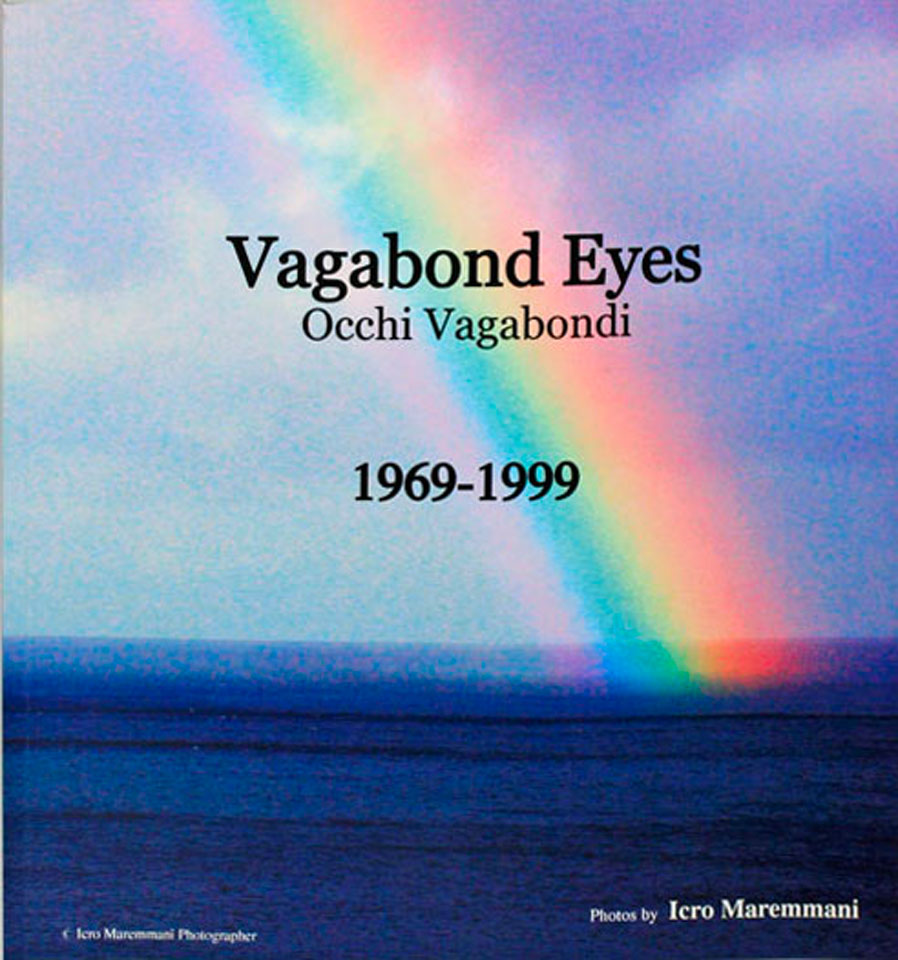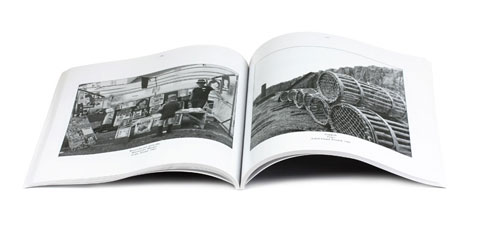
Pages: 112
Price: 50,00 Euro
Icro Maremmani Photographer
This collection is representative of an uninterrupted, sinuous path, which traces out the calligraphy of a photographic glance. Icro Maremmani’s piercing glance constantly transforms itself, while retaining a capacity for inner resemblance – a visual DNA – that can be recognized in themes and forms that recur with extraordinary coherence in the techniques used and in the subjects chosen, independently of the years that have passed.
Landscapes, people, action and still lifes all share a recurrent form of authorial vision, while taking shape within the relationship that Maremmani holds with the worlds of appearance and of essence, of exteriority and interiority, and also of the here and the now. This glance is, again, paradoxical, in being spatially close to people and objects, through its location within a given action or event, whereas, in the case of landscapes and waterscapes, the glance stays remote, dislocated, decentred and marginalized. In both these different cases, the glance aims to set up a deep, empathetic relationship with the subjects that have been recorded – a solid, lasting emotional bridge with the object of vision.
It is this same paradoxical glance (whose dual viewpoint is spatially split between nearness and distance, while remaining affectively true to itself and, therefore, whole because constantly in search of an empathetic contact between the observer and what is observed) that acts as the foundation stone for the capacity to discover beauty and the expressiveness of the objective that Maremmani opens on to the world.
The dualism between people and places, and between nearness and distance, is expressed through technical and formal coherence – a coherence that can be found in all the phases of this unfolding production. Maremmani’s vision reaches us as direct, precise, clear-cut observation, which is very close to the immediacy and dynamism of straight photography and of reportage, when the glance halts on life captured as it takes place, in becoming action and movement, as happens, for instance, when it dwells on a workplace (Quarries and Quarrymen 1 and 2, Brother Glass) and on the potential energy of a person caught at a moment of rest from work (Quarries and Quarrymen 3, Quarryman, The Barber’s Shop), or of rest from play (those Turkish Children that bring to mind photographs by Verga, such as Bambina alla finestra [1911]).
It is here that the energetic dialogue between bright colours (The Barber’s Shop), but especially between black and white, between intensely and dimly lit areas (Quarries and Quarrymen 1), as well as in the sharp contrasts between forms, oblique lines, perspectives that are dizzying while still offering release and freedom (Quarries and Quarrymen 2) become the elements that ensure a perfect synthesis between the reportage-like contextualization of the subject and the vitalistic visualization arising directly out of the decisive moment, out of the essence of the event caught in mid-course. The emotional involvement with the subject observed is strong, partly because of the rigorous documentation of the social dimension and partly because of the deep understanding, in the viewer, of the life, the interiority and the identity of those who have been seen.
At the other extreme, there are the landscapes and places. The mode of observation is no longer always clear-cut, or made up out of vigorous contrasts while being located as far as possible within the event, so close to the subject as to almost able to touch him or her; it becomes veiled and more softly toned, mediated and percolated through a viewpoint that clearly relies on a pictorial basis, diametrically opposed to the reportage-like, straightforward viewpoint. These are mostly photographs in colour (delicate and misty in Haystooks in Upper Versilia, Bathing Huts, Waiting for Autumn, and in most of the views belonging to the sequence The Places I love; crisper and with clearer outlines in the more recent production, as in The Salt-mill 1 and 2), which lead up to the extraordinary chromatic crystallinity of Sails at Dawn and the conceptual geometry of Looking at the Sky. In some of the most admirable achievements, including a few in black and white (The Places I love: Winter in Valle di Zeri), the photographer’s eye stays at a distance, spatially and temporally speaking, from the observed location, and the viewpoint remains quite aloof, decentred and on the rim. This effect often springs from the choice of the angle from which to shoot, which is no longer frontal and direct, as it was in the portraits of the quarryman and the barber, but lateral and asymmetrical (Fishing from the Pier, Being Born in the Country), or located low down (Ruined House on the Beach, The Places I love: Loch Ness); alternatively, the same effect may be brought about by breaking up the space between the subject and the object of the glance with a barrier, which acts rather like a theatrical curtain that, half-open on the scene, allows the spectator to see, but at the same time splits up the spaces belonging to the observer and to the object of observation (trees or bushes are used in the two interpretations of The Mill of Dreams; a fishing net in Behind the Fence, a City; the shore-line or sand-dunes in The Long Beach and Ruined House on the Beach; the sea in The Places I love: Cape Corse; the spray coming from falling water in the second version of The Mill of Dreams; the gate in House with Gate). Besides the spatial distancing, there is temporal remoteness, too; divided landscapes are created not only between the subjective side and the objective side, between the ‘I’ and ‘the Other’, but also between the ‘now’ and the ‘then’, between the present time belonging to the instant of expression, and the far-away time, by now almost irrecuperable, of what has been expressed.
In these images, the author brings out photography’s capacity to be a powerful means for the conservation of memories, through a visual crystallization of the object which makes that object take on the symbolic status of a remembered fragment, the single remnant of a past that can only be recovered through static vision. Time suspends its momentum and comes to a stop, not only when the places shot are placed in the other dimension of the pictorial or in threshold spaces between water and land that simultaneously divide and unite the subject and the object of vision (mills and beaches), but also when, over these spaces, there falls the white, milky immaterial light of memories loaded with passion and regret (The Places I love: Loch Ness) or of an indefinite period of waiting (referring to past time in Living in the Past, or to future time, possibly comprising death, in Behind the Blinds); these last shots are strongly reminiscent of Vermeer; or, again, such spaces are sometimes seen flooded with a stealthy, secret, fluid light, appropriate to the inner, magmatic spaces of the psychic depths, where, for the first time, the observer find himself spatially close to the object of vision (Cliffs at Low Tide 1 and 2).
Maremmani’s vagabond journey is a visual wandering that achieves contact with places, people and different time-periods, in an objective multiplicity that is always surprising, but that should ultimately be recognized as a spirally formed path, because it tends to be drawn back to the past and to memories, to a unity that turns out to be emotional and subjective, to the times and spaces of the Self. This is a multiform yet familiar visual account, the place of memories lived and relived through the eyes, of an existence crystallized in remembrance and given back as an immobile image of the depths.
Simona Beccone and Anthony L. Johnson
Department of English Studies
University of Pisa
Italy

AU-CNS Association for the Application of Neuroscientific Knowledge to Social Aims
Via XX Settembre, 83 – 55045 PIETRASANTA (Lucca) - Italy
VAT No. 01681650469 – Fiscal Code 94002580465
Phone: 0584 - 790073
E-mail: info@aucns.org